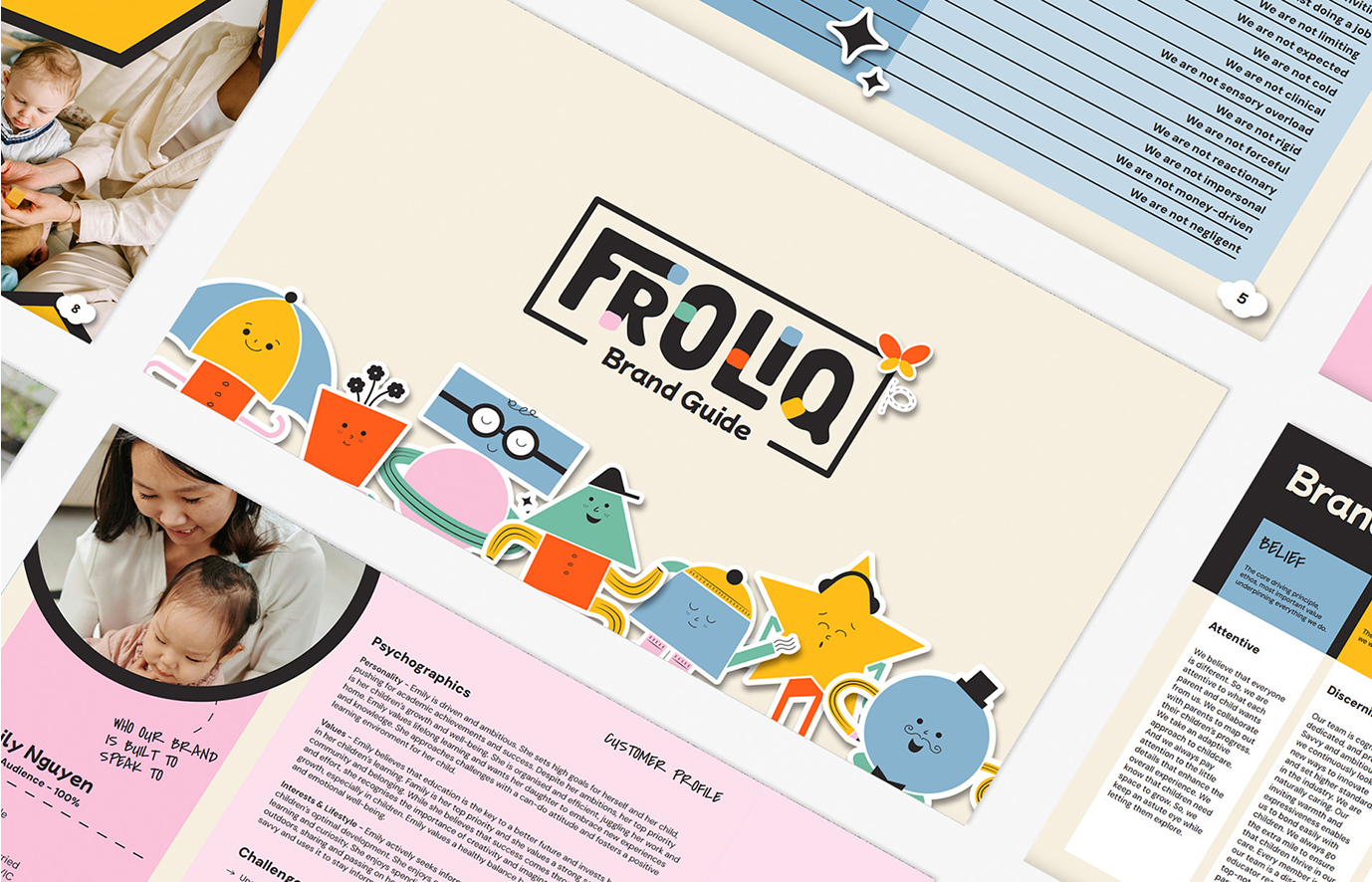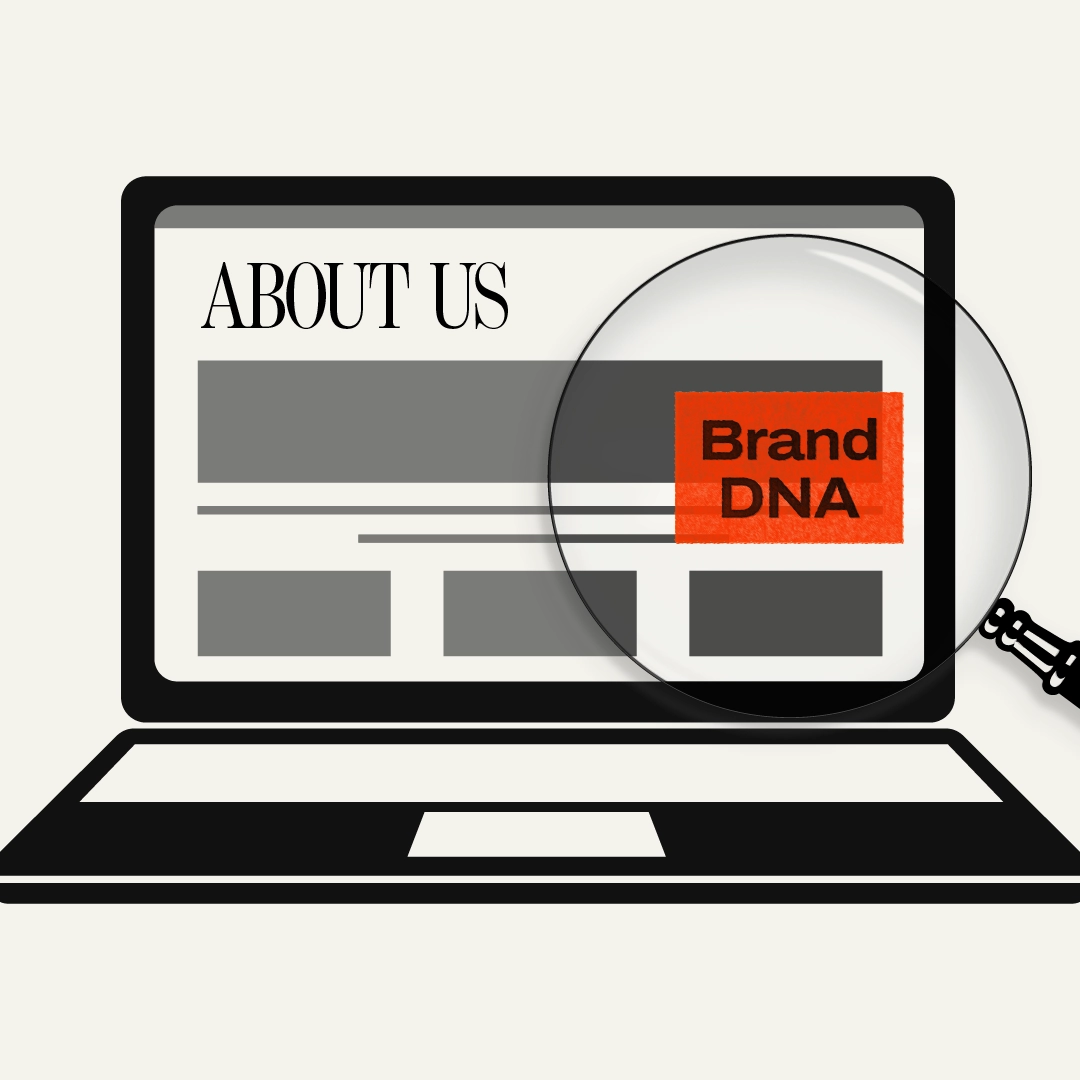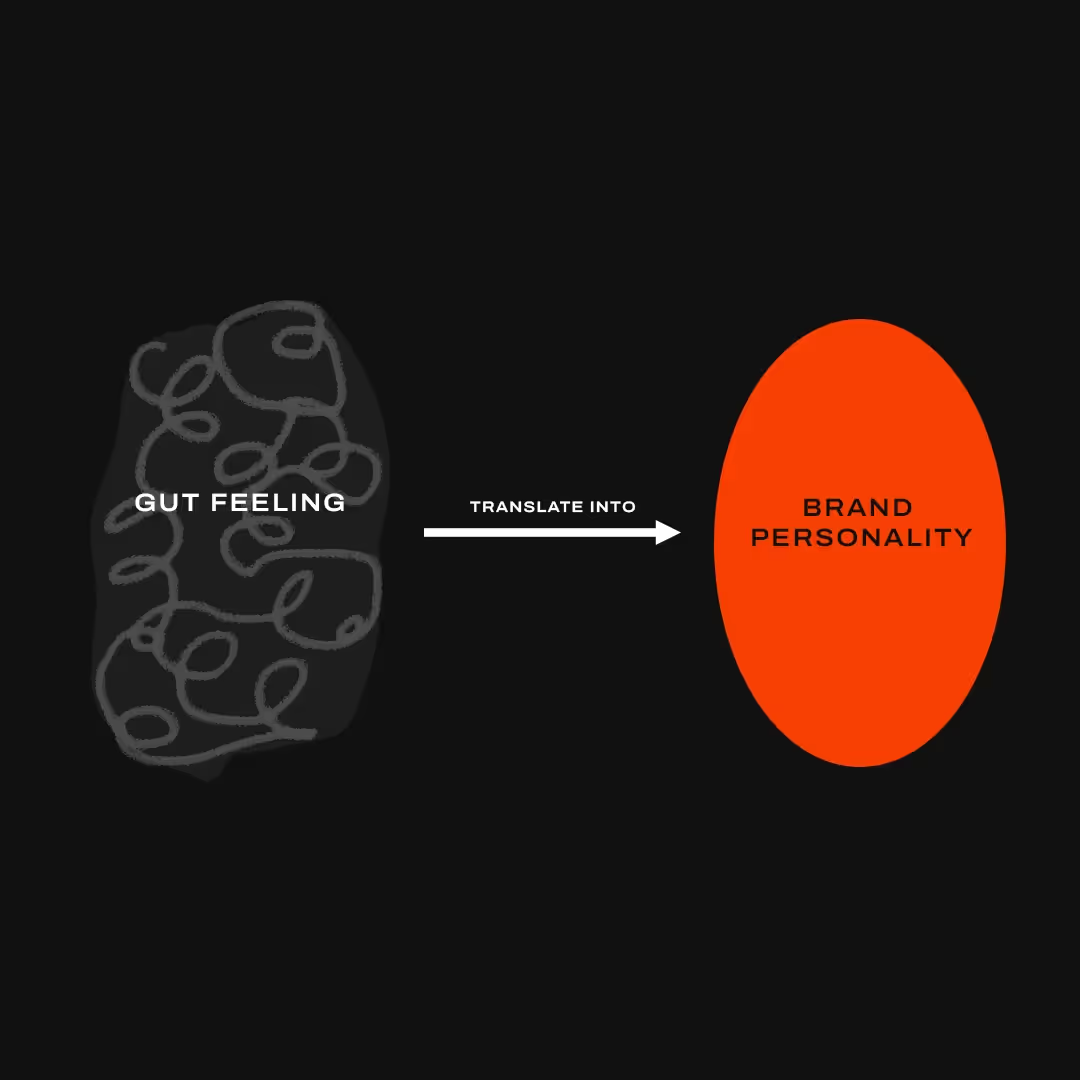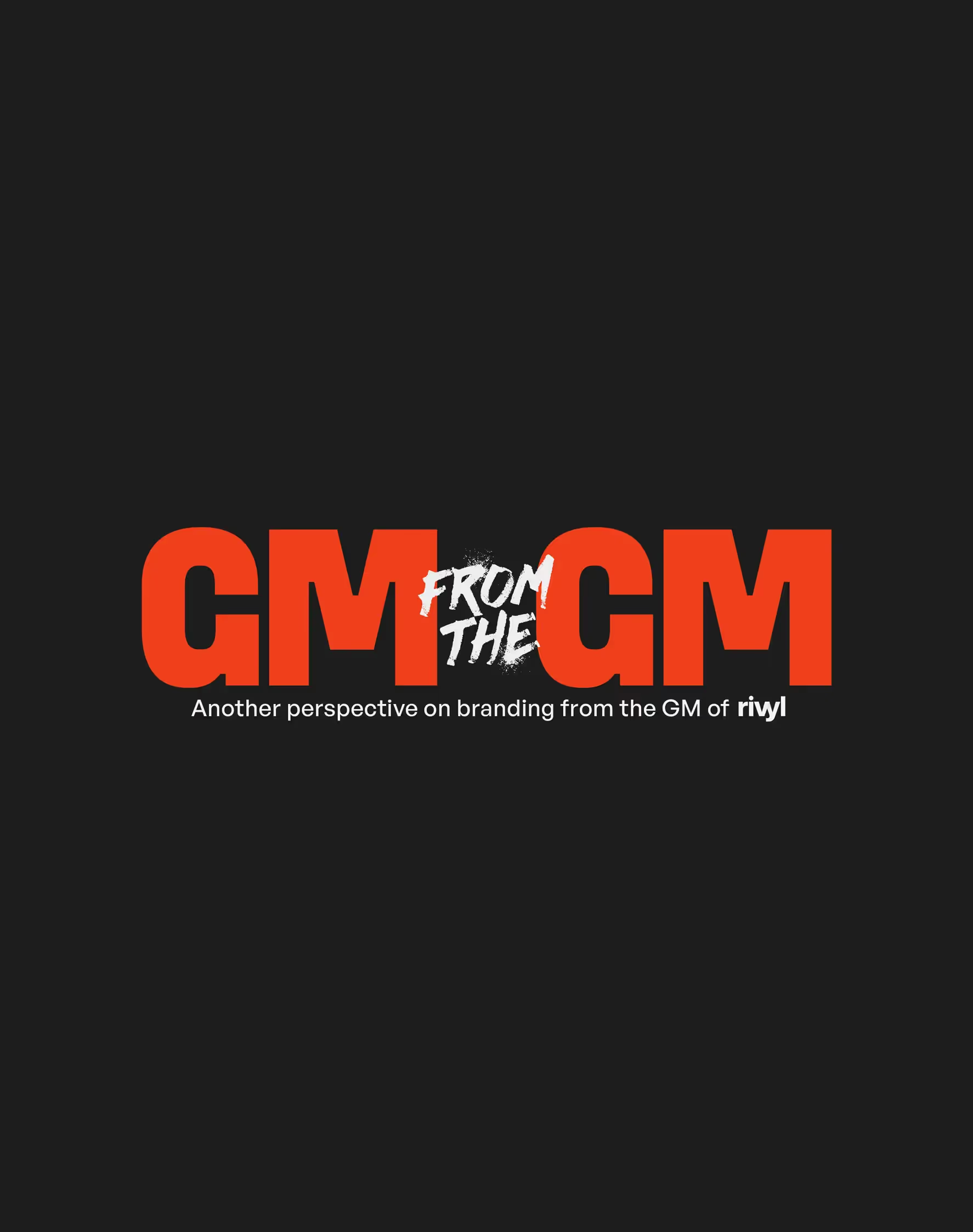The Value of Clarity in Your Brand's Mission and Vision
Discover the significance of grasping your target audience's needs, preferences, and behaviour, and learn strategies for effective engagement.


Understanding your target audience is vital for successful marketing. Delve into the concept of target audiences, their significance in connecting with customers, and the benefits of proper identification and communication. From demographics to psychographics and behaviour, explore how knowing your crowd can transform your business.
What is a target audience?
A target audience is the specific consumer group a business targets with its products and marketing. Identified by demographics, psychographics, geography, and behaviour, they're essential for effective marketing strategies.
Have you ever wondered who businesses have in mind when they create their products or run their marketing campaigns? How do they know precisely what we want and need?
Let talk about the target audience, the different types of audiences, and what proper identification and communication with your target audience can do to your business.

So what exactly is a target audience? In the business world, a target audience refers to the specific group of people a business aims to reach and engage with. It's like finding your people amidst the chaos of the market. This group of people is precious to a business because they are most likely to buy their products or services.
Defining a target audience is crucial for any business. Just like a compass guides you when you're lost, knowing your target audience helps companies navigate the vast sea of possibilities.
Imagine you've started a company that designs trendy workout gear for athletic women. Without a defined target audience, you could market your products to men, older people, and those who don't work out. But by defining your target audience as young, active women who prioritize style and functionality in their workout gear, you can tailor your products and marketing efforts to this specific group. You're speaking directly to their needs, desires, and aspirations, and that's where the real magic happens.
Now you might wonder how a target audience relates to a target market. Think of a target market as a larger category, including your target audience. While a target audience refers to the group of individuals you have in mind, a target market is the broader segment of consumers who share similar characteristics, needs, and preferences. Returning to our previous example, your target market might be "athletic women". In contrast, your target audience would be the subgroup within that - "young, active women seeking stylish and functional workout gear."
The relationship between a target market and a target audience is like finding the sweet spot within a larger group of people. Defining your target audience helps you narrow your focus and direct your resources where they'll have the most impact. By understanding your target audience's motivations, desires, and pain points, you can create products and marketing messages that resonate with them, forging a deep connection and driving their loyalty.
Think about brands like Nike and Starbucks. Nike's target audience comprises athletes, sports enthusiasts, and individuals with an active lifestyle. On the other hand, Starbucks caters to a target audience of urban, young professionals and coffee lovers, providing them with a distinct coffeehouse experience. These brands have excelled by understanding the needs and desires of their target audiences, allowing them to develop meaningful relationships and thrive in their industries.
Defining a target audience for a business is not about exclusion; it's about inclusion. It's about connecting with the people who truly resonate with what you offer and building a community around your brand. So, the next time you see a business thriving and making waves, remember that it's likely because they've cracked the code and found their target audience - their particular group of people who share their passion, values, and aspirations.
Distinguishing Between a Target Audience and a Persona

In marketing, a persona is a fictional representation of your ideal customer. It's like creating a character that embodies your target audience's traits, behaviors, and preferences. This persona is built based on real-life data, research, and insights about your target market, forming a vivid picture of who your ideal customer is as an individual.
While a target audience represents a defined group of people, a persona delves deeper into your ideal customer's individual characteristics and motivations. It's like zooming in on a single person within that larger group, understanding their preferences, pain points, and aspirations more personally. By creating a persona, marketers can humanize their target audience, allowing them to develop tailored marketing strategies that truly resonate with their ideal customers.
How does a persona differ from a target audience? Think of a target audience as the larger picture and a persona as the intricate details within that frame. Your target audience represents the broader group with similar characteristics, needs, and preferences. On the other hand, a persona dives deeper, focusing on an individual's specific traits and behaviors within that target audience.
Let's put this into perspective with a real-life example. Imagine you run a skincare company that caters to people with sensitive skin. Your target audience would be sensitive skin individuals looking for gentle and effective skincare solutions. However, by creating a persona, you could develop a character named Sarah - a 30-year-old woman who struggles with sensitive skin, experiences redness and is constantly searching for products that won't irritate her skin. By understanding Sarah's specific needs and concerns, you can tailor your marketing messages and product offerings to address her unique pain points, making her feel understood and connected to your brand.
A target audience and a persona play vital roles in successful marketing campaigns. A target audience provides a broader direction, helping businesses identify the target people. However, a persona takes it further, enabling companies to craft personalized marketing strategies that resonate with individuals within that target audience. By understanding the specific needs, desires, and pain points of their ideal customers through personas, marketers can develop tailored messages, create relevant content, and design products that meet the individual preferences of their target audience.
We are a team of branding experts who will help you craft the best plan of attack for your business.

Categories of Target Audiences

To truly understand target audiences, we need to shed light on the different types that exist. Think of it as unraveling the mysteries of humanity's diverse interests and desires. There are primarily three categories that businesses aim to reach: demographic, psychographic, and geographic.
Demographic Target Audiences
Demographics are the bread and butter of marketing. This category focuses on traits such as age, gender, income level, and educational background. By understanding these characteristics, businesses can tailor their products or services to cater to the needs and preferences of their target audience. For example, a toy company might target children aged 4-8. At the same time, a luxury car brand might aim for affluent customers between the ages of 35 and 55. Remember, demographics provide valuable clues about who might be interested in what a business offers.
Psychographic Target Audiences
Psychographics dives into the hearts and minds of consumers, exploring their personalities, values, and lifestyle choices. Businesses can connect with their audience on a deeper level by identifying psychographic factors like interests, opinions, and behaviors. Imagine a fitness brand targeting health-conscious individuals who value sustainability and eco-friendly practices. By understanding their psychographic traits, businesses can create tailored messages that resonate with their target audience.
Geographic Target Audiences
Geographic target audiences focus on specific regions, cities, or even neighborhoods. This category acknowledges that different locations have unique preferences and needs. For instance, a surfboard company would naturally target coastal areas with large surfing communities. At the same time, a snow gear brand would set its sights on regions with snowy mountains. Businesses tap into these geographic nuances to ensure their products or services perfectly fit their desired location.
Identifying a Business's Target Audience
It's time to learn how to identify which category a business's target audience falls into:
- Conduct Market Research: Businesses utilize market research techniques like surveys, interviews, and data analysis to gain insights into their target audience. They can build a comprehensive profile of their ideal customers by gathering information about their customers' demographics, psychographics, and geographic details.
- Analyze Consumer Behavior: Monitoring consumer behavior is like peering through a window into the desires and actions of a target audience. Businesses use tools like website analytics, purchase data, and social media metrics to understand how customers interact with their brands. This information helps them refine their target audience and tailor their marketing efforts accordingly.
- Seek Feedback: A wise business knows the value of feedback. By actively listening to their customers and needs, companies can adapt their strategies to serve their target audience better. Surveys, focus groups, and online reviews are just a few ways businesses collect feedback to gain valuable insights into their audience.
Let's tie all this information together with exciting real-world examples. These examples showcase how businesses successfully identify and target their respective audiences:
- Nike: The global athletic giant takes advantage of both demographics and psychographics. Nike has built a massive following of loyal customers by targeting active individuals (demographic) who value performance and style (psychographic).
- Trader Joe's: This grocery chain has carefully curated its target audience with geographic precision. Trader Joe's selects locations based on neighborhoods where health-conscious, eco-friendly consumers thrive. They tap into the desires and needs of their specific geographic target audience.
- Spotify: The popular music streaming platform delves into the psychographics of its target audience. By creating personalized playlists, discovery algorithms, and tailored recommendations, Spotify connects with music enthusiasts who appreciate customization and diverse genre selections.
The Power of Knowing Your Target Audience

You're planning a surprise party for a friend and want everything to be perfect. From the decorations to the food and the music, you want to create an atmosphere that will bring your friend joy. But there's a catch—you don't know what your friend likes! Without understanding their preferences, your efforts might fall flat. The same goes for businesses. Understanding your target audience is like having a secret key to unlock their hearts and minds.
Unleashing the Benefits
Precision Strikes: Imagine an archer aiming at a target blindfolded. Their shots would be wild and unpredictable. But now, arm that archer with precise knowledge about the target's size, shape, and distance. Every arrow hits the bullseye. Businesses with a deep understanding of their target audience can tailor their products, services, and messages to meet their needs and desires. This level of precision allows them to create impactful marketing campaigns that speak directly to their customers' hearts.
Improved Customer Satisfaction: When businesses truly understand their audience, they can create experiences that leave their customers longing for more. Companies can develop products and services that address these needs by identifying their pain points, desires, and aspirations. This leads to higher customer satisfaction, increased loyalty, and a stronger bond between a business and its audience.
Cost-Effective Marketing: Imagine scattering flyers about an organic café promoting a special offer on every street corner. Sure, some people might be interested, but you'll waste resources and efforts on many people who won't care. When businesses know their target audience, they can focus their marketing efforts on reaching those most likely to become loyal customers. By narrowing down the audience pool, companies can optimize their marketing strategies, leading to more cost-effective campaigns with a higher return on investment.
Navigating the Criticisms
Homogenization Concerns: One of the criticisms against target audience identification is the potential for homogenization. Some argue that businesses might overly simplify their audience, treating them as one-dimensional individuals with identical preferences and needs. While understanding the target audience is crucial, it's essential to remember that each audience member is unique. Acknowledging and accommodating this diversity is vital to avoiding homogenization pitfalls.
Missing Out on Untapped Market Potential: When businesses focus too much on a single group of customers, it's a bit like wearing blinders. Sure, they might be catering to their die-hard fans perfectly, but it could mean they're missing out on a whole world of untapped opportunities. We can't forget that there's always room for growth, for stumbling upon unexpected market segments and forging new connections. The key to success is finding that sweet spot between staying true to your core audience and remaining open to venturing beyond the familiar. Because it's in this balance that businesses can thrive, adapt, and discover uncharted territories full of potential.
Evolving Audience Dynamics: Target audiences are not static entities. They evolve, shaped by cultural shifts, technological advancements, and changing societal norms. Businesses must stay vigilant, continuously monitoring and adapting to these changes. Failure to do so could result in missing the mark and losing touch with their audience's changing needs and desires.
That's all folks!
So there we are, my fellow knowledge-hunter, at the end of our enlightening rendezvous about the art of knowing one's target audience. We unwrapped the many benefits it brings to businesses, empowering them to forge stronger connections and achieve marketing excellence. However, we also pondered the criticisms and potential pitfalls, ensuring that companies remain mindful and adaptable in their quest to know their audience. So, next time you see a business capturing your attention effortlessly, remember—they've taken the time to understand you. And now you have the power to appreciate their efforts, armed with the knowledge that lies behind their success. It's like setting off on a thrilling quest, chalking up the map of your people—those who resonate with your brand's vibrant heartbeats. It's no less exciting than seeking hidden treasures or decoding ancient scripts. Once you find them, you get to nurture a dialogue, a vibrant two-way street humming with shared dreams and conversations. The more you tune in, the more intimate the dance becomes—with your brand in step with your audience's rhythm, illuminating their needs and desires like thousand candles. Remember, your audience isn't just a crowd; it's the backbone of your epic story.
Good news: Our strategies don't, so yours won't have to.

The Accelerator

Building brands with powerful market presence
Leading Brands Choose us
Book in with one of our experts.



























































